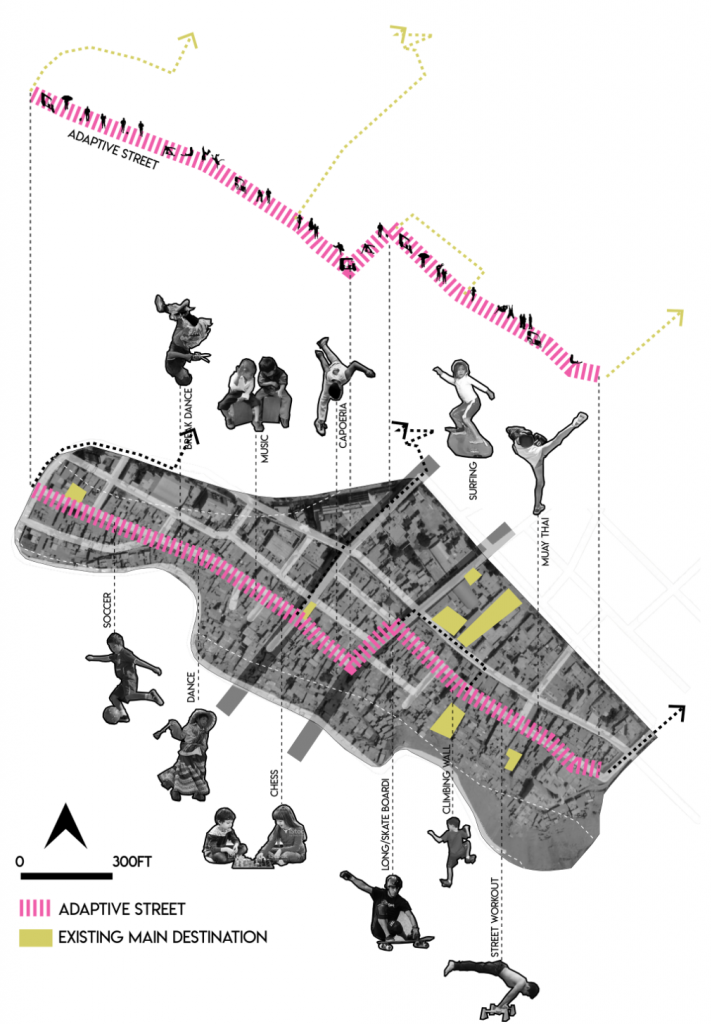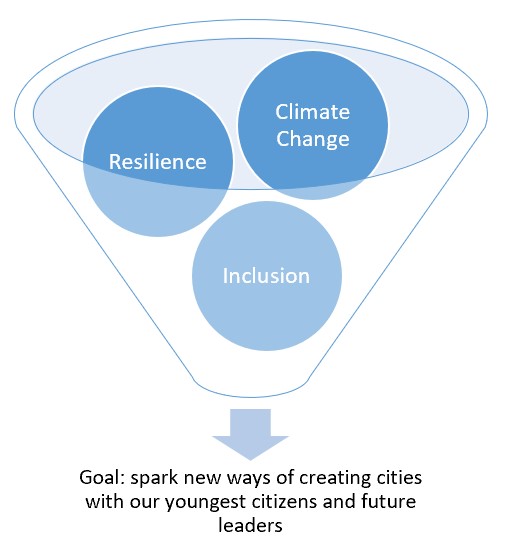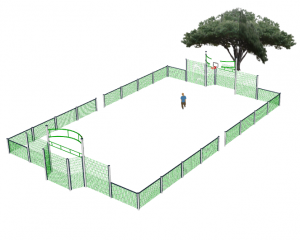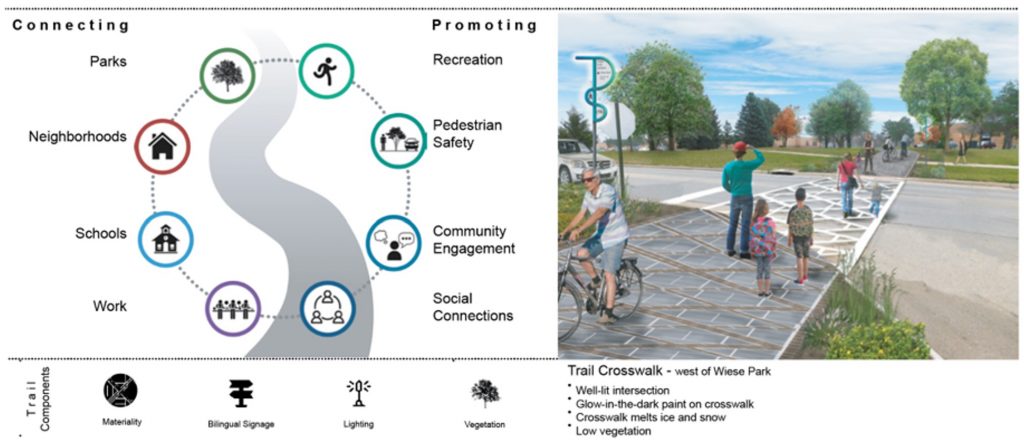SEMESTER THEME: Child-Friendly New Orleans: Youth Inclusion, Resilience, and Climate Change”

As cities diversity, densify, and globalize, it is increasingly important for urban design to respond to the changing needs of urban populations, especially vulnerable and underrepresented populations such as young people.
The Fall 2019 LA 402 Section A studio led by Dr. Shirtcliff will focus on design strategies for the inclusion of youth in design for climate change and resilience in New Orleans, LA.
Background
On May 25, 2018 Mayor LaToya Cantrell signed an executive order to create the Office of Youth and Families (OYF) to address these challenges. OYF was conceived to support systems-level change for vulnerable youth and families. https://nola.gov/office-of-youth-and-families/ The City of New Orleans is also in the process of completing a Parks Master Plan, Youth Master Plan, Public Library Master Plan, Hazard Mitigation Plan Update, Comprehensive Recovery Plan, and Sewerage and Water Board Master Plan. While this is still just the beginning, OYF has built tremendous momentum and has already teamed up with ARUP (see Cities Alive Brochure), placing design and planning at the forefront of addressing systems-level changes. Further, OYF has prioritized both top-down opportunities as well as pulling from the ground-up through multiple non-governmental organizations. Children and youth are now, more than ever, a top priority for New Orleans’ physical, social, and economic development.
Our Charge
As Fourth Year Landscape Architecture students, you’ve mastered the design process!
 However, for “A Child-Friendly City” we won’t have a site. How could there be a site for all of the youth living in New Orleans? Never mind the complexity of trying to transport all of the individuals who don’t have access to reliable, private or public transportation, we would be over-assuming that we could solve all of their problems with design. What role can design play? Beyond families, youth need: programs, recreation, education, and employment. Aside from the obvious activities, design doesn’t seem to fit in (Figure). Urban design challenges start with people. So, let’s reevaluate the design process to be about people instead of a bounded site.
However, for “A Child-Friendly City” we won’t have a site. How could there be a site for all of the youth living in New Orleans? Never mind the complexity of trying to transport all of the individuals who don’t have access to reliable, private or public transportation, we would be over-assuming that we could solve all of their problems with design. What role can design play? Beyond families, youth need: programs, recreation, education, and employment. Aside from the obvious activities, design doesn’t seem to fit in (Figure). Urban design challenges start with people. So, let’s reevaluate the design process to be about people instead of a bounded site.

Our Goals
Goal One: Climate change is affecting coastal communities around the world. Our studio will prioritize identifying opportunities and barriers for youth in urban design for climate change.
Goal Two: Resilience in urban design is measured through people. Our studio will identify alternative infrastructures that address the unique needs of young people and families.
Goal Three: Inclusive design is only possible by successfully translating across barriers, eg. designers meet with clients and share ideas through representations like models and drawings. Our studio will generate new, creative communication assets to aid The City of New Orleans in making a Child-Friendly City.
Definition
The United Nations defines a child as any human being from the age of 0 through 17. Children have unique needs that change across this critical developmental period, from infants and toddlers, to teens and young adults. Our Child-Friendly City Urban Design Process considers the developmental period in its entirety.
Strategy 
The urban design studio departs from site-based interventions to advance urban design as a continuous process or dialogue in the evolution of cities. The approach is more like having a conversation with the city rather than contributing another fragment to its well-worn pages. Like all stories, we will begin by framing the context of our studio within a broader global narrative (phase 1). Once the background for a child-friendly urban design process has been assembled, our characters will go off on their adventures. Phase 2 uses a path or story-line approach to capture the mundane details of the built environment that are infused in the daily life of children and youth living in New Orleans. Urban designers are adept in “seeing” cities as adults, so we create cities for adults, setting aside pockets for children and families. But our charge is to see a city from 95cm and above. To tell this story we will walk a line, what de Certeau referred to as “the pedestrian speech act.” The use of transects, a line repeatedly followed across the city, permits the studio to create novel storylines that we can place in the Child-Friendly City narrative. The end product will, literally, be a unique story-line that aims to bring each path into a conversation. At this point, our studio will travel to New Orleans to trace our story-lines in real time, engaging the sights, smells, sounds, and messy life of the urban environment. Each story will be shared with members of the City of New Orleans who would like to see this conversation evolve. Our studio will return to Ames, Iowa with new inspiration and a commitment to (Phase 3) creating and sharing a new, child-friendly story.
PHASE 1: Setting the Stage
- Expert Inquiry: Climate Change, Coastal Cities, and Foregrounding Youth in Design. How are coastal cities adapting infrastructures to respond to climate change? How are youth included? Individual effort.
- Precedent Study: Child-friendly Cities Tools and Techniques. Case studies and precedent work that builds towards our inclusion effort. Individual effort.
- Inclusion: Develop and design social media, blogs, etc. intended to improve translation. Connect with existing youth programs, places, and networks found in expert inquiry, precedent study, and in New Orleans. #neworleansyouth The online platform will be our primary means of generating new creative communication assets to share with the City of New Orleans. Class effort with individual assignments.
PHASE 2: Drawing the Line
- Mapping Transects: Past, Present, Future: Students in teams of 3 – 4 will draw a line across the city. The line will not be straight and must be completely accessible to a child walking. The line must cross: a residential area, elementary, middle, and high school, interstate, canal, low-point, high-point, urban center, and urban edge. The line will be studied at each of these key points and every 1/2 mile. Synthesize inquiry, precedents, and inclusion into maps that begin to model strengths, weaknesses, opportunities, and threats in New Orleans hard and soft infrastructure systems. This is where systemic change begins at the ground level.
- A Path to Change the Story Proposal: Teams. Before Intervention. Focus on route, path, and obstacles considering climate change, resilience, and youth inclusion. Primary outcome is a 2 minute and 30 second video packed with what you have learned from inquiry, precedents, mapping across your story line in New Orleans. You will collect narrative place (and maybe people) data while in New Orleans and include this into your prototype presentation Tuesday, October 8 with members of the City of New Orleans. The prototypes can be revised before the final phase 2 review on 10/18.
PHASE 3: Changing the Story
- Final Proposal: After intervention. Same route, path, and obstacles with resolved interventions. Primary output again is a three – four minute video that builds upon prior work to demonstrate opportunities for youth inclusion in the design of a child-friendly, resilient New Orleans. Students are encouraged to explore social media platforms and multiple modes of representation, communication, and storytelling to help change the story. For final reviews, students will share videos and print material at three scales: city, path, and pedestrian. All media will be available on the studio website. All work must be correctly labelled with student names to count towards final grades. Final student work will be available on website as a PDF. Any material can be electronically shared via Google Drive link. Send request to Ben Shirtcliff: bens@iastate.edu.

Leave a Reply